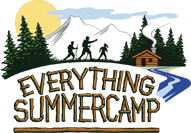Hey, Holidayers!
Last week, I talked a lot about all of the different holidays that people celebrate throughout the month of December. There’s a bunch! Today is yet another one (a holiday of a much smaller scale, but still, a holiday nonetheless): National Christmas Card Day. This is the day for getting your cards in the mail so they reach their destination on time.
The name of this day may make a point to specify ‘CHRISTMAS’ cards, but really, y ou can send any card for any holiday that you want. Anyway, what I want to talk about today isn’t which holiday your greeting card refers to; what I want to talk about is the importance of sending a physical card in the first place and why it’s different than sending an E-card or some social media exchange.
ou can send any card for any holiday that you want. Anyway, what I want to talk about today isn’t which holiday your greeting card refers to; what I want to talk about is the importance of sending a physical card in the first place and why it’s different than sending an E-card or some social media exchange.
As I had mentioned on this Sunday’s Blog post for Letter Writing Day, “In a world where communication is dominated by phone conversations, electronic messages, and social media posts, receiving an actual, handwritten letter sent through the United States Postal Service means more than ever!”
I think a similar sentiment can be applied to holiday greeting cards. When people receive a real, tangible item in the mail, it means so much more to them than some flashy, digital animation that dances and scrolls across the screen.
Most people have spots in their homes where they keep greeting cards that they’ve  received in the mail—this time of year especially. They keep them on the mantel, on a mail counter in the kitchen, on a desk in the home office. Holiday greeting cards aren’t just received, read over, and pitched. They’re put on display where they deliver holiday joy, not just for the moment of arrival and a quick read, but joy that lasts the season!
received in the mail—this time of year especially. They keep them on the mantel, on a mail counter in the kitchen, on a desk in the home office. Holiday greeting cards aren’t just received, read over, and pitched. They’re put on display where they deliver holiday joy, not just for the moment of arrival and a quick read, but joy that lasts the season!
From Everything Summer Camp, Happy Holidays to one and all!
- John


 ailbox.
ailbox.


 The Fiesta of Our Lady of Guadalupe is a Mexican holiday dating back to the morning of December 9, 1531, when a ghostly girl on top of the Tepeyac Hill instructed one Juan Diego to build a church there in her honor. As a miraculous sign to prove her identity as the Virgin Mary, the apparition had Juan Diego pick Castillian Roses (a foreign flower to Mexico that inexplicably bloomed on the hilltop in mid-December). The lady rolled the flowers in a fabric. On December 12, when Juan Diego, showed the roses to the Bishop, the image of the Lady of Guadalupe was there on the fabric!
The Fiesta of Our Lady of Guadalupe is a Mexican holiday dating back to the morning of December 9, 1531, when a ghostly girl on top of the Tepeyac Hill instructed one Juan Diego to build a church there in her honor. As a miraculous sign to prove her identity as the Virgin Mary, the apparition had Juan Diego pick Castillian Roses (a foreign flower to Mexico that inexplicably bloomed on the hilltop in mid-December). The lady rolled the flowers in a fabric. On December 12, when Juan Diego, showed the roses to the Bishop, the image of the Lady of Guadalupe was there on the fabric! t important day of the year for the Japanese which makes Ōmisoka the second-most important. They observe it by eating a bowl of long noodles called Toshikoshi, which translates to “crossing over from one year to the next.” The Japanese will also traditionally make a midnight visit to local temples or shrines to be there when the new year arrives.
t important day of the year for the Japanese which makes Ōmisoka the second-most important. They observe it by eating a bowl of long noodles called Toshikoshi, which translates to “crossing over from one year to the next.” The Japanese will also traditionally make a midnight visit to local temples or shrines to be there when the new year arrives.




 Hanukkiah. A menorah, on the other hand, has only seven candleholders—like the lamp that was used in the ancient holy temple in Jerusalem.
Hanukkiah. A menorah, on the other hand, has only seven candleholders—like the lamp that was used in the ancient holy temple in Jerusalem.
